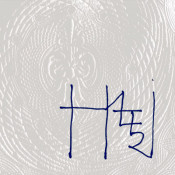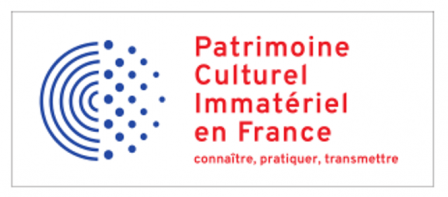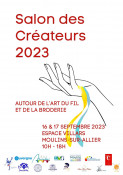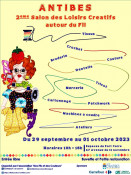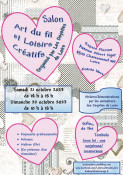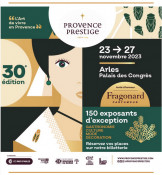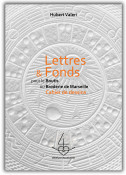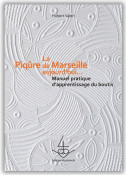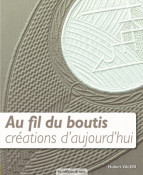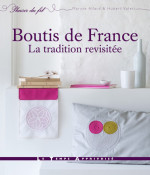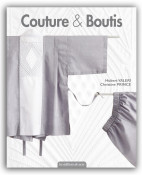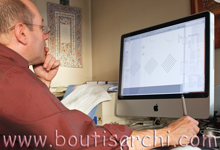 Hubert Valeri,
Hubert Valeri,
Who was born in Marseille on April 19, 1953, spent his childhood between Libreville, in Gabon with his parents, and the region of Marseille with his grand-parents.
The science-oriented Baccalaureate that he passed in Libreville opened the doors to “Les Beaux Arts» in Paris, where he studied architecture and went on to obtain the french diploma of architecture “D.P.L.G.”.
The successive crises which adversely affect most architects' professions urged him to diversify: beyond his free-lance, architectural projects, and his participation in collective urbanisation plans, he began to design plans for interior decoration and decorative furniture, such as the arm chair “Parhy” which plays with both parabolic and hyperbolic notions.
His artistic hobbies (miniature works, colour-wash drawings, sketches...) stood him in good stead for the art of quilting that he discovered in 1999, after having read Mrs Gaussen's handbook. The intriguing universe of light and darkness that quilting offered, as well as notions of volume and the very simplicity of the material itself, all fascinated him and gave him the opportunity to express himself through his work, that could be both contemporary and seen as a reminder of his provençal roots.
Systematic experimentation of different quilting techniques led to his first catalogue of drawings in 2003 : “BOUTIS, l’album d’un architecte” (publishing house : La bibliothèque des metiers).
Most of the time simple themes and family scenes are depicted, the product of 19th-century family tales: here, traditional techniques of the eighteenth century mingle with 21st-century aesthetics to produce contemporary quilting. This, quite naturally, appeared to him to be the only way to save and perpetuate a skilled and popular tradition.
Later followed his booklet “Allégorie au point compté” (of the same publishing house) which assembles a collection of symbols relevant to and representative of a personnage in order to make an allegorical portrait.
Today, Hubert Valeri draws in both architectural and quilting spheres, his two universes and areas of expertise. It is no doubt for this reason that the drawings for his quilting are created in much the same way as his architectural plans: they grow on the basis of personal topics, but certainly go on to bloom with each new customer's demand.
In February 2009, an introduction to quilting was released, Boutis d’aujourd’hui, (publishing house : Le Temps Apprivoisé) with a step-by-step guide and different quilting ideas, previews of which are to be found in this website. This book will enable you to master the art of quilting.
Only one wish and hope drives Hubert: to share his experience of the traditional techniques involved in quilting and its adaptation to our time by spreading it further than simply through the quilting courses that he offers.
Passionate about his work, Hubert hopes to accompany you from start to finish in your own quilting projects: feel free to join him in his world of contemporary, french 'boutis'.
MY BOUTIS
My ambition is to open your eyes to real French whole clothe quilting, the ‘piqûre de Marseille’, an occupation that requires traditional craftsmanship, and for which I have put on display a part of my work in simple, everyday décor.
Quilting is neither 'face-up' nor 'face-down'; both sides display the same quality of finish. The lighting plays with the natural relief of the quilt, creating shades of darkness and areas of light; it even shines through the material, producing a fine but moving perception of the design on it. What the eye perceives, the finger strokes, itself becoming alert to particular sensations: a repetition of parallel furrows, the delicate puff of the motif: in short, a whole universe of sensuality.
Although the purity of the
work can be intimidating, the technical use of lighting is always at its
fullest advantage on white material; if the material used is dark, the result
is much less spectacular, because the produced shadows lack contrast and are
thus less perceptible to the eye.
My artisanal whole clothe quilting, the 'piqûre de Marseille', is entirely hand made ; it is work that requires time and pain-staking patience, but also technique acquired over the years. I use traditional types of cotton, for example the 'batiste' which was used by our grand-mothers ; it is an easy fabric and can be used for many different purposes; indeed, its scope is larger than the purely ornamental.
The subjects I work with are always my own personal creations; I want to be innovating and I hope to design contemporary drawings that are testimony to 21th-century aesthetics, harnessed, nevertheless, by traditional art methods. My hope is to breathe new life into quilting as an art in its own right, and give it a future, rather than revive it as nostalgic testimony to the past.
